Renaissance-Modern Art Exam 2
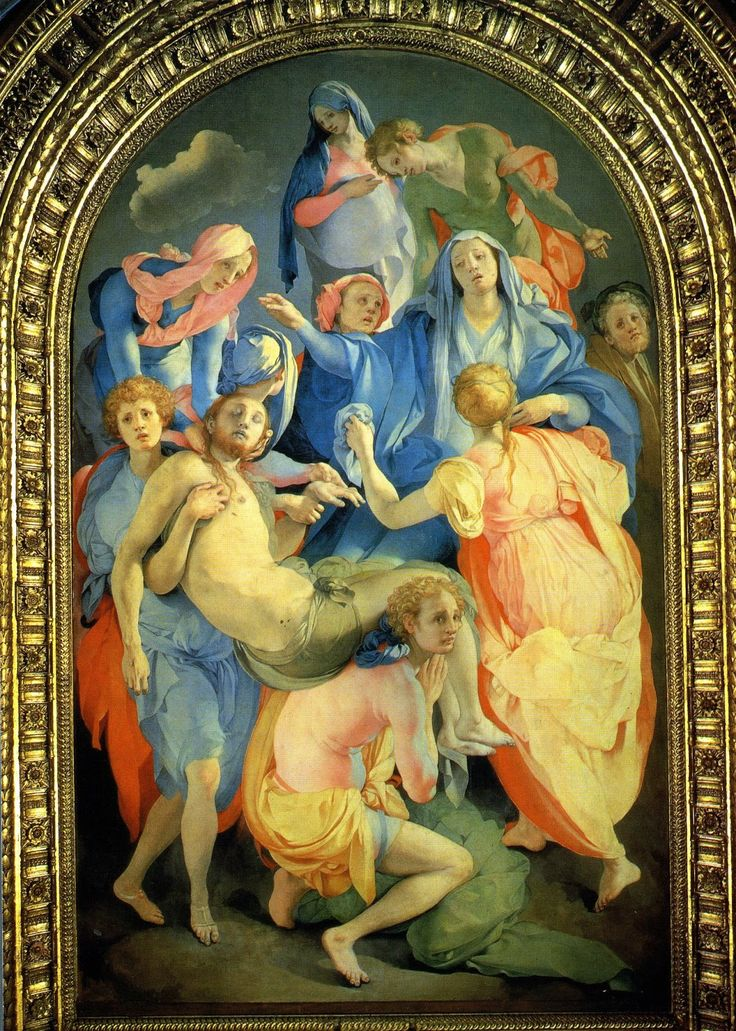
Pontormo, Pieta, Florence, Italy 1526-28
Late Renaissance Italy
extreme upset, very expressive unlike Michealangelo
quite a different representation because there is much more people and a variety of people.
unique use of color; bright and light colors, vs. dark in the High Renaissance.
No use of linear perspective
Dreamlike, as if floating in the canvas.
Elongated and contorted position of Christ
Crammed in, unrealistic use of space, odd nowhere space.
Pontormo stuck himself in, on the right.

Bronzino, Allegory of Venus, 1546
Mannerism
Cupid and Venus
Extremely detailed musculature
Man screaming behind Venus & cupid
weird contorted and elongated poses to show off how well the artist can paint it despite the complex pose.
eroticism
very weird use of space
1/35
Earn XP
Description and Tags
Mannerism-Rococo
Name | Mastery | Learn | Test | Matching | Spaced |
|---|
No study sessions yet.
36 Terms

Pontormo, Pieta, Florence, Italy 1526-28
Late Renaissance Italy
extreme upset, very expressive unlike Michealangelo
quite a different representation because there is much more people and a variety of people.
unique use of color; bright and light colors, vs. dark in the High Renaissance.
No use of linear perspective
Dreamlike, as if floating in the canvas.
Elongated and contorted position of Christ
Crammed in, unrealistic use of space, odd nowhere space.
Pontormo stuck himself in, on the right.

Bronzino, Allegory of Venus, 1546
Mannerism
Cupid and Venus
Extremely detailed musculature
Man screaming behind Venus & cupid
weird contorted and elongated poses to show off how well the artist can paint it despite the complex pose.
eroticism
very weird use of space
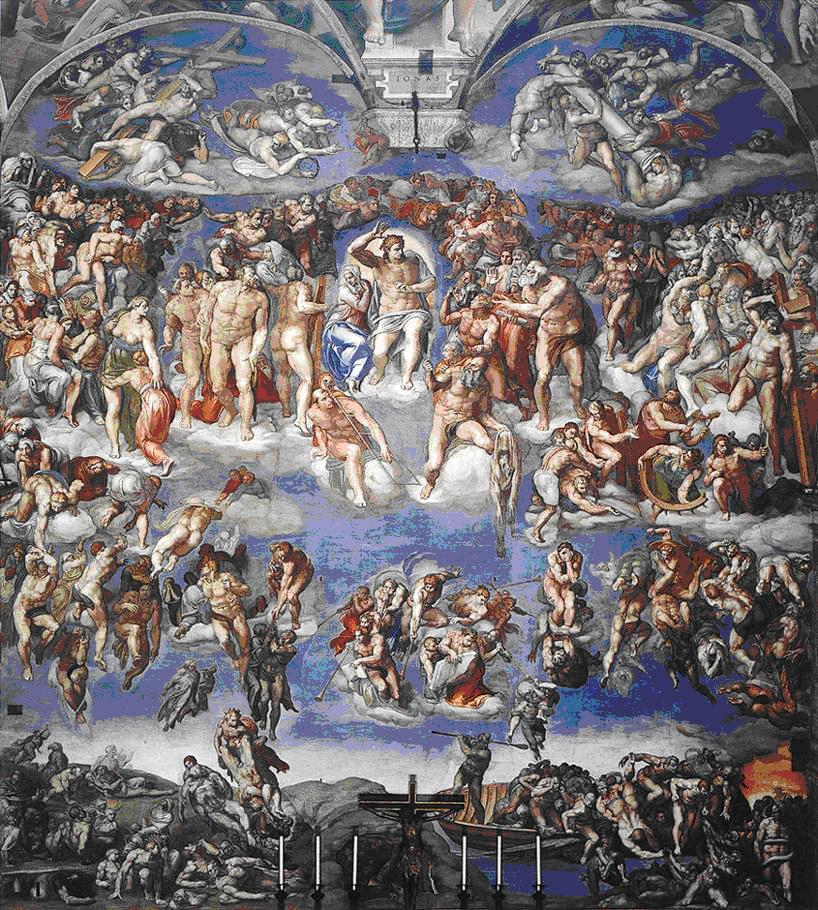
Michelangelo, Last Judgement, Sistine Chapel, Vatican 1534-41
Late Renaissance Italy
At the end of the world, it will be decided whether you go to heaven or hell.
elongated, twisted figures to show off details
no linear perspective
Christ is depicted differently, muscular, elongated
St. Bartheomew, a martyr who was typically skinned, is depicted as Michelangelo’s skin.

Parmigianino, The Madonna with the Long Neck, 1535
Mannerism
Could just be any mother, not specifically a Holy family.
Northern Italy
elongated and graceful Mary
Baby Jesus, depicted very weirdly, very long.
The gesture of the hand and neck trying to showcase gracefulness.
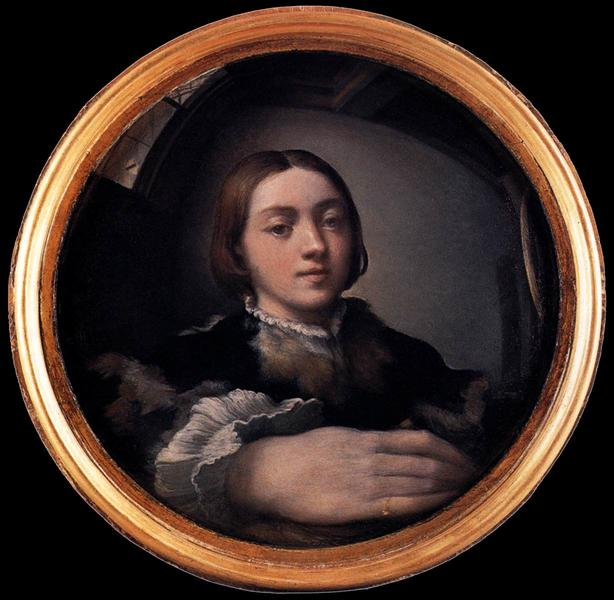
Parmigianino, Self-Portrait (In a Convex Mirror)
Mannerism
wanted to impress the pope
requested a carpenter to cut out a wooden sphere of a barber’s mirror
used oil glazes to produce a surface luster, more mirror like
the viewer becomes the painter, Parmigiano himself.
like a real convex mirror, the artist’s face is the center, undistorted, while the hand and sleeve are more exaggerated in size.
purposeful emphasis on the hand to represent the supreme importance of the painter’s hand in fashioning an artwork
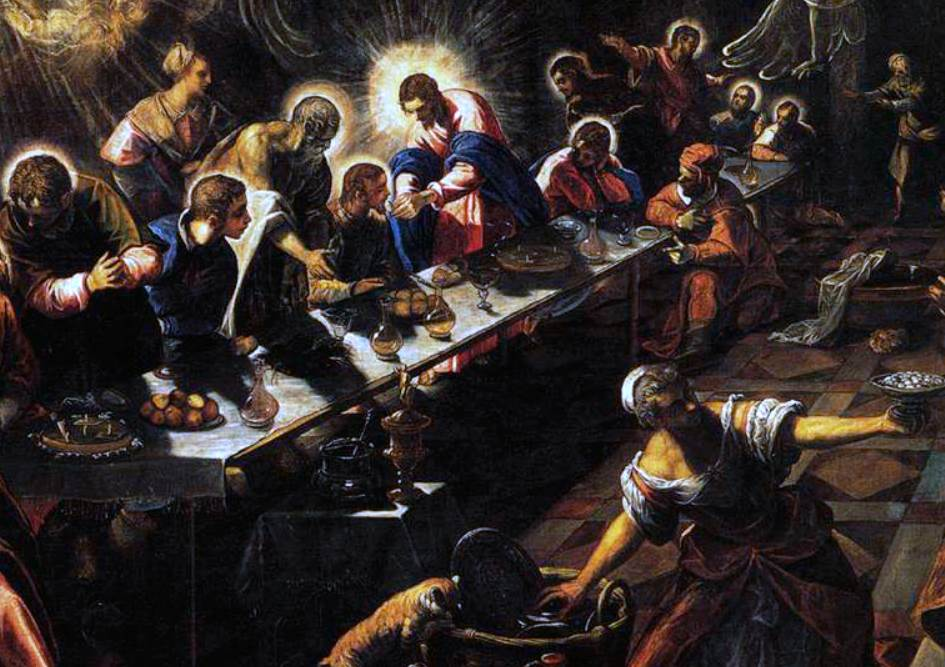
Tintoretto, Last Supper, 1594
Mannerism
embed with emotional power, depth of spiritual vision, glowing Venetian color schemes, and dramatic lighting.
Halos establish the biblical nature of the scene
engaging viewers w/ the Counter-Reformation ideals and the Catholic Church’s belief in the didactic nature of religious art.
imbalanced composition and visual complexity largely display Mannerism
vanishing point is off the page, not on Christ like in Leonardo’s version, creating limitless depth and motion
Jesus is brought to the viewer’s attention bc of the flaring light
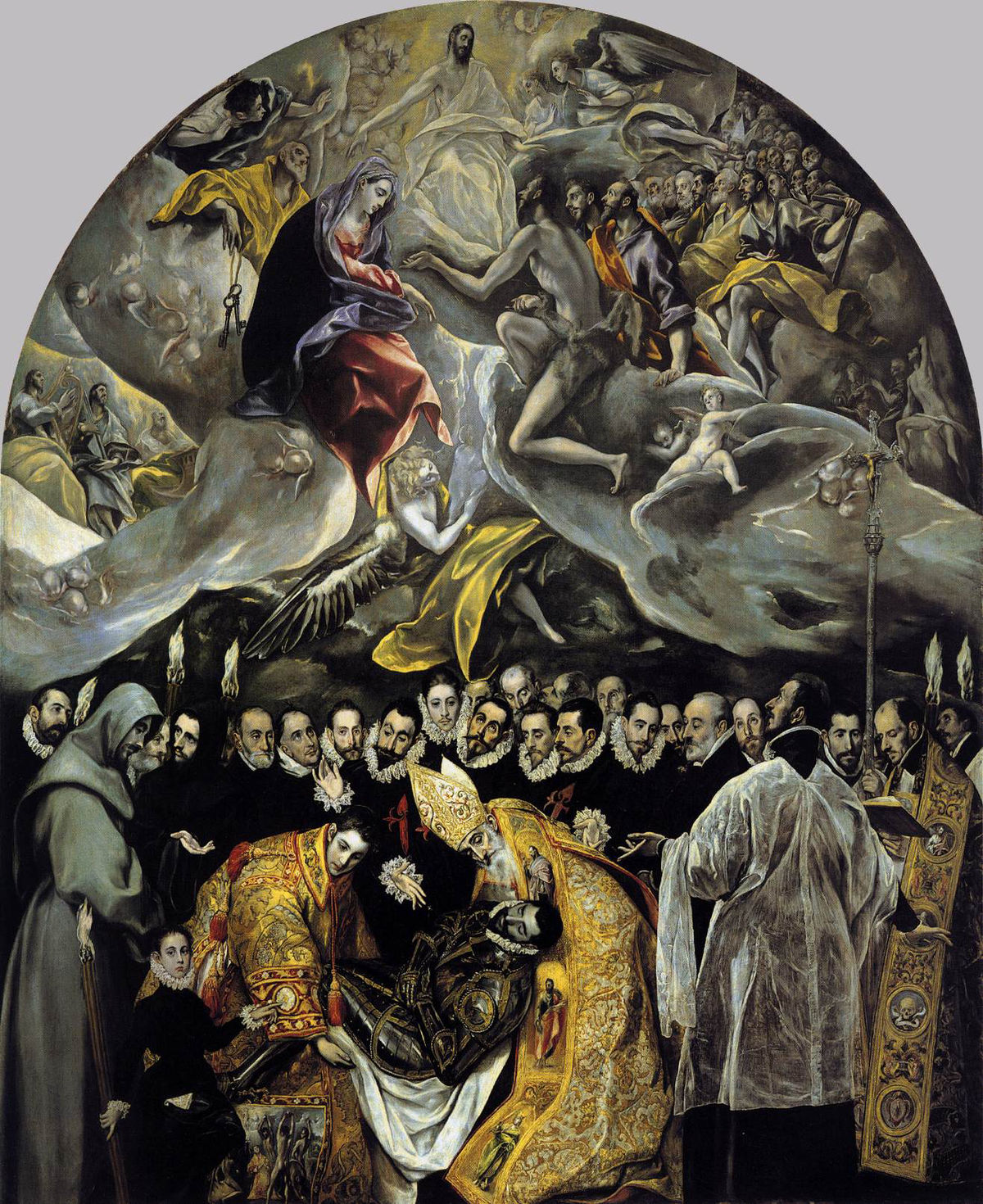
El Greco, The Burial of Count Orgaz, Spain, 1586
Late Renaissance in 16th Century Northern Europe
El Greco (The Greek)
2 saints came back to Earth to bury Count Orgaz
Head above the land in front of the crowd is El Greco, staring right at us, the viewers.
Rational perspective, nothing strange.
The burial of Count happened 200-300 years ago before the painting was created.
Elongated figures
Highly expressive style which foreshadowed developments of the Baroque era in Spain and Italy.
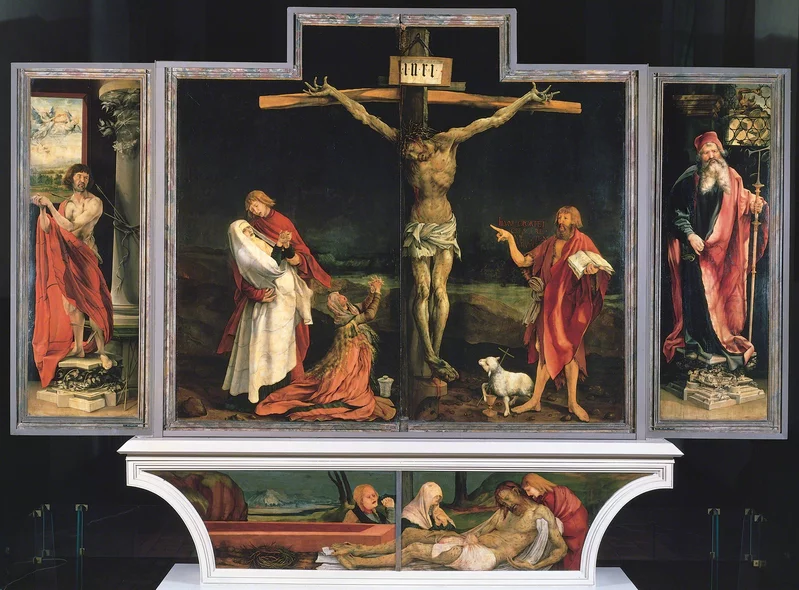
Grunewald, Isenheim Altarpiece CLOSED
Late Renaissance Northern
Commissioned by Church connected to a hospital and at the time there was a disease going around caused by spoiled rye.
False bottom, doesn’t open
Legs of Christ are cut off, mirroring the amputations that people afflicted with ergotism would have.
Gruesome extreme details of Christ, represent the disease in order to get more followers.
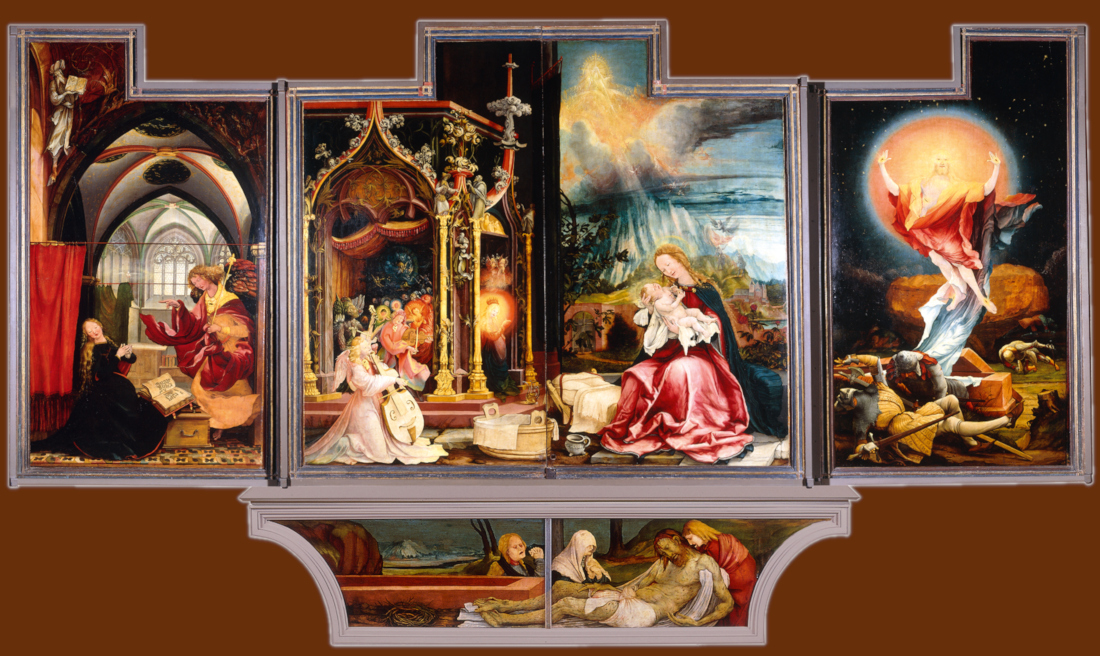
Grunewald, Isenheim Altarpiece OPENED
Late Renaissance,
Anunciation, Madonna & Child with Angels, Resurrection
Linear perspective in high detail
3rd panel, new and different rendering of Christ
Resurrected Christ
Mannerist Christ, elongated and floating
Outside, much more somber & full of disease, where the inside is bright, full of hope.
encouraging the sick patients that they will survive this disease/sickness.
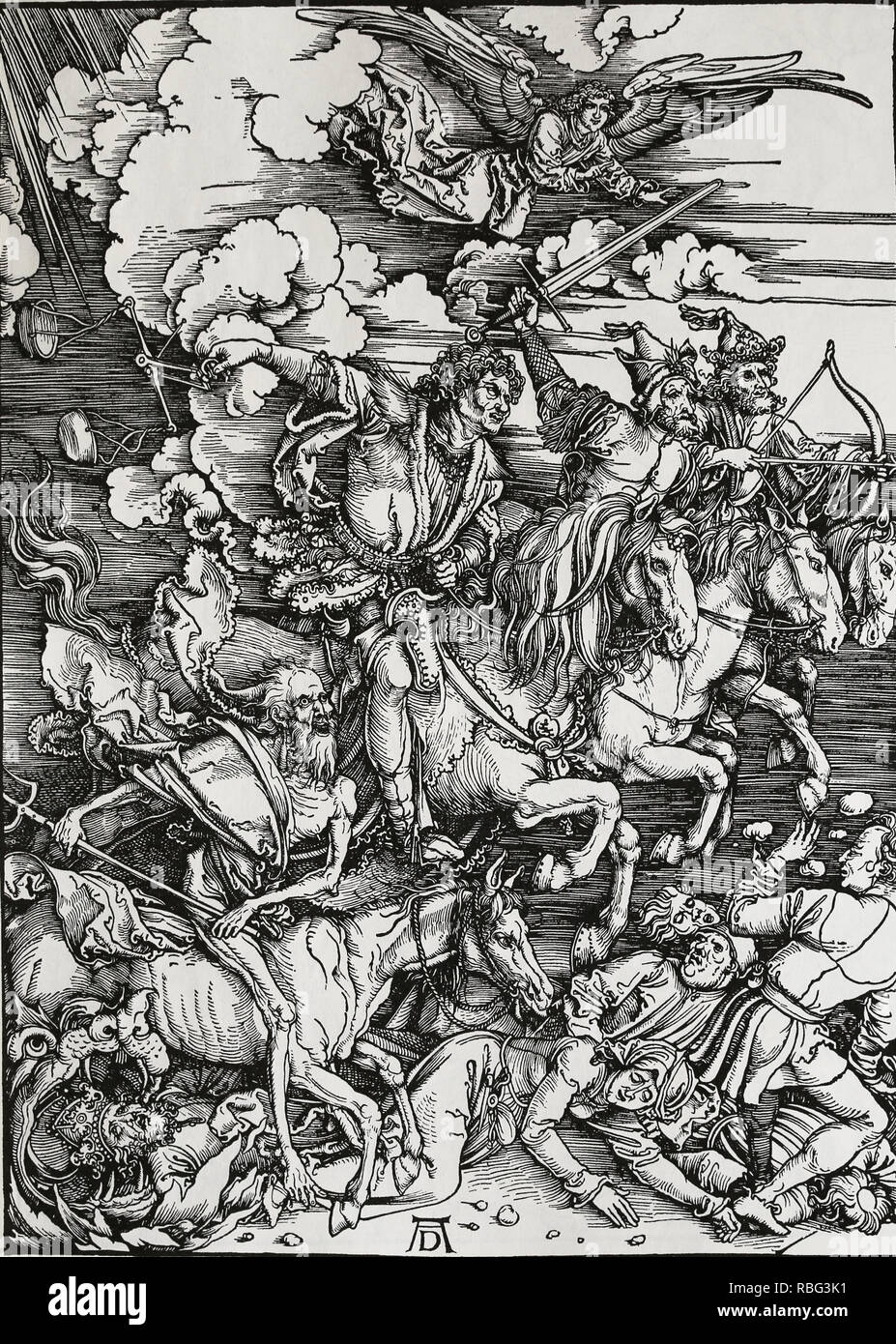
Durer, The Four Horsemen of the Apocalypse, 1498
Mannerism
Wood etching
Durer does not have to sit around and wait for commissioners to make money
Artists would now have different money, spare money, and can be a part of the merchant class.
Free to create whatever he wants
People at this time were very nervous that the world would end at the year 1500, or at the very least something very bad.
4 horsemen come to Earth to reek havoc, Conquer, War, Death, and Famine, causing Christ to come down and start the Last Judgement
Famine’s emaciated horse and man, running over a bishop.
Very dramatic

Holbein, The Ambassadors, 1533
Late Renaissance Northern
Carefully selected objects, globe, lute, books, and measuring tools for astrology/astronomy, made to show that they are renaissance men and well-traveled, things they’ve collected by traveling.
fancy clothing, curtains, fur-trim, tiles, show off wealth
similar to the portrait of mother in fanciest clothes with her son
Warped skull, looks normal at an extreme angle when viewing the painting.
Vanitas
The items in the image are fleeting, the lute can break, the book can have ripped pages, and wealth will not follow you in death.
Vanitas
A reminder that things of this world are fleeting. Not going to stay the same, not always about death.

Bruegel, Peasant Wedding
Northern Late Renaissance
major change, no holy people or wealthy people
naturalistic perspective
still only made for the wealthy and force them to see peasants’ daily lives
giving the same holy treatment as in all the extreme detail in holy or wealthy paintings to peasants
bride behind the green curtain
groom is helping serve the meal
musicians, people chatting, pretty busy and casual
peasants also get married, letting the wealthy know
make the peasant class seen
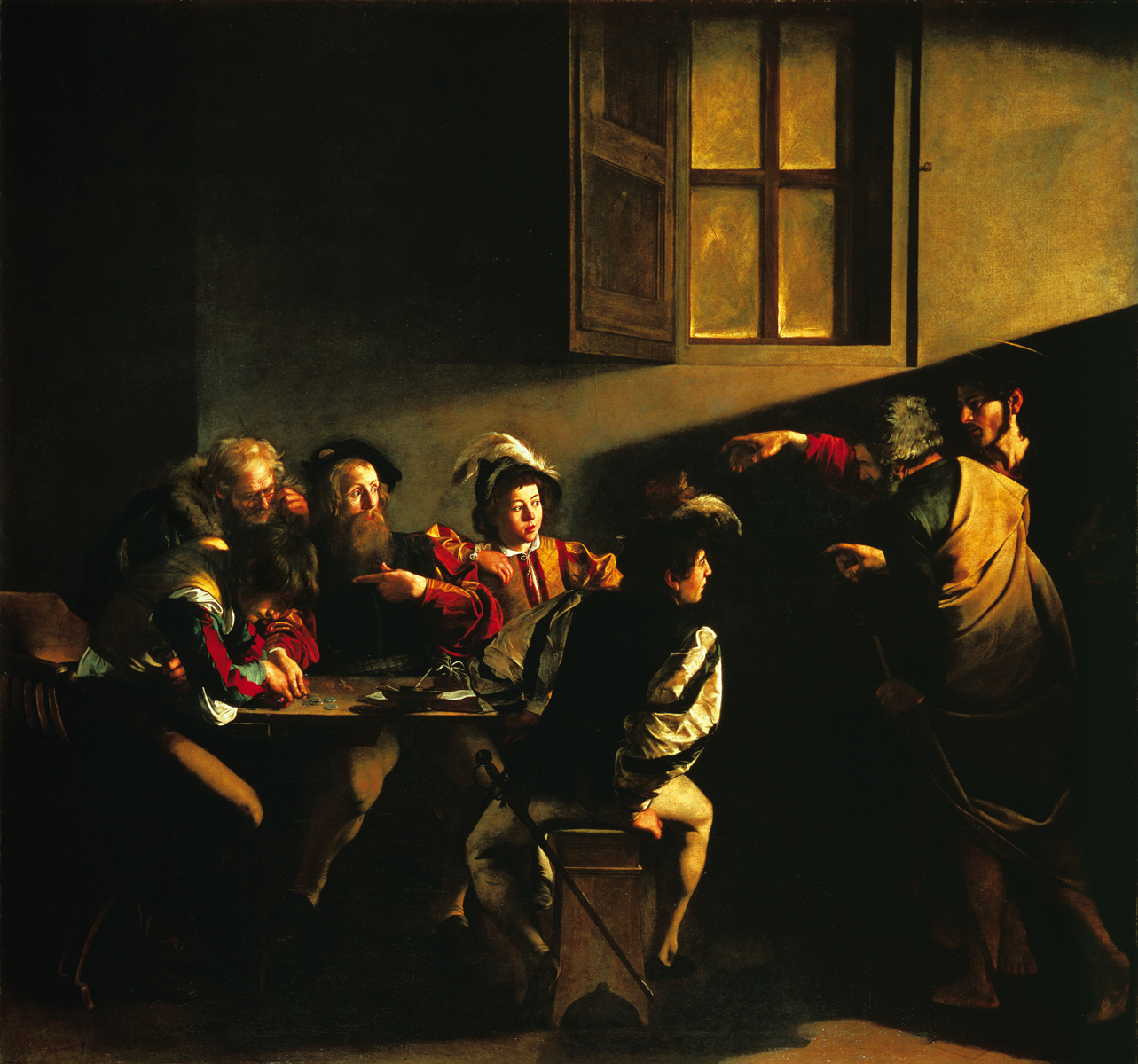
Caravaggio, The Calling of St. Matthew
Italy Baroque
father of Baroque, leader of this movement
Tenebrism
God came to call Matthew to surface, do these holy things to become a saint
Nothing glamorous, ordinary, everyday scene until the appearance of Christ and St. Peter.
Matthew pointing to himself, “Me? You’re coming for me?”
Regular clothes of the 16th century, besides Christ & St. Peter, appearing from the past.
Adding some emotion, after mannerism.
Droopy point like Michelangelo
Slightest suggestion of a halo.
Baroque
Portuguese word for “irregular pearl,” strange, grotesque, contorted, beautiful, fascinating,
dramatic, theatrical, exuberant
appeals to the senses, evokes emotion, the art of persuasion
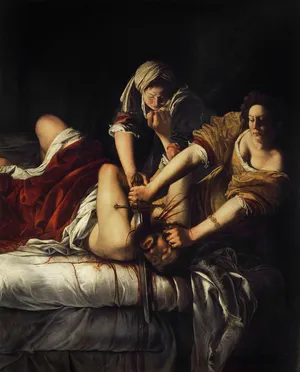
Gentileschi, Judith Beheading Holofernes
Baroque
General of Nebuchadnezzar, who was trying to conquer neighboring towns around the area and sends Holofernes to do so.
Judith, a beautiful widow, caught Holofernes’ eye and kept inviting her to his tent. She eventually accepts and beheads him with his own sword.
Soon before this painting, Artemisia was raped by her art teacher and her parents allowed her to take him to court for property damaged and were able to win the case. Won only in name, as the public eye viewed her as a temptress.
Tenebrism
Handmaiden is important to Artemisia as her handmaiden had witnessed her rape but did not come forward.
Very unlady-like, putting lots of effort, strain to her face, gripping his hair.
slight foreshortening, adds in more drama, and heightens the act.
scene of revenge
Successful female artist at the time
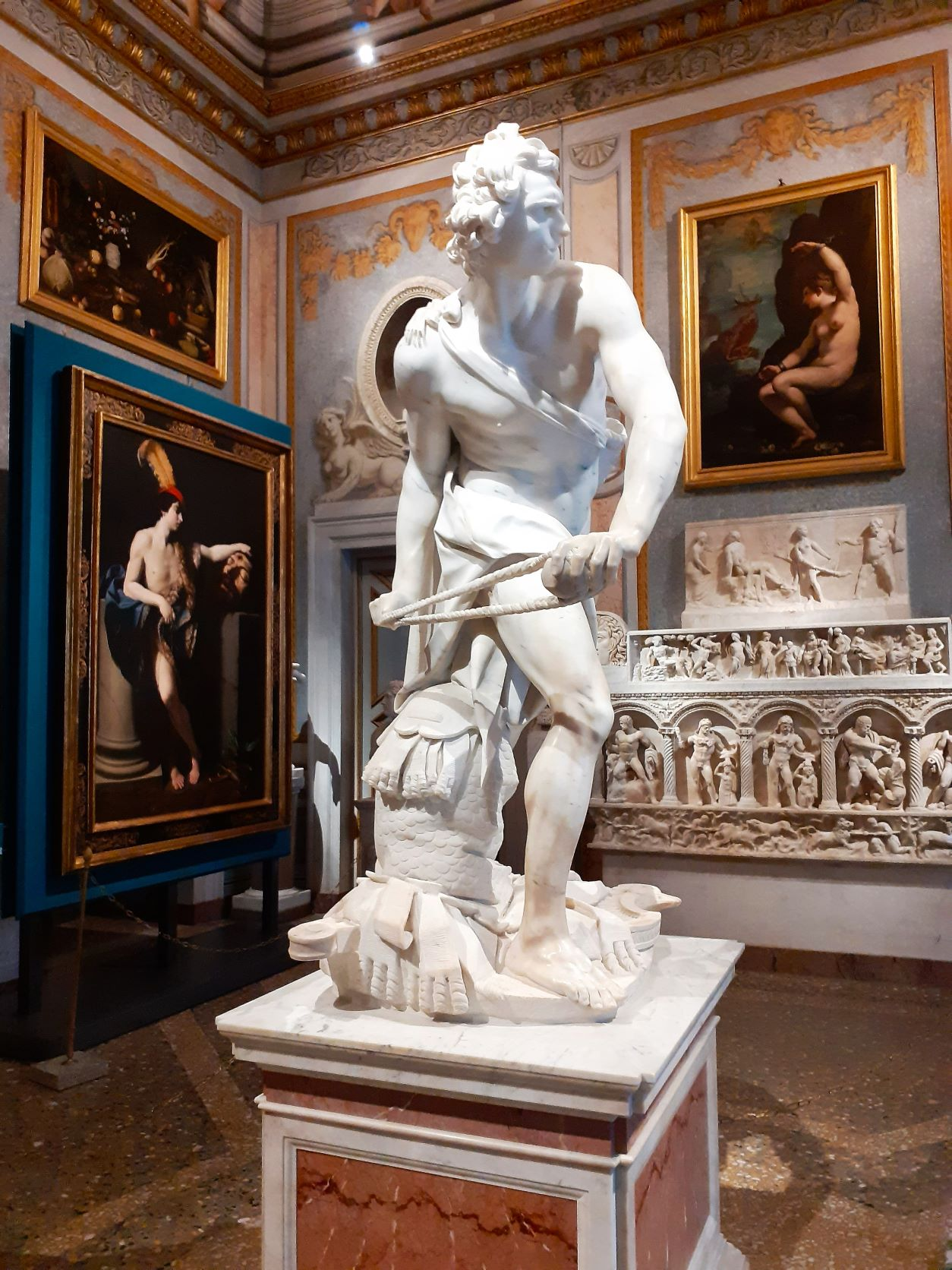
Bernini, David, 1623
Italy Baroque
dramatic stance compared to the other David statues
The moment of actually throwing the stone
More expression on the face of determination
At this moment, the Church declared a decree of decorum and decreased the amount of nudity, even added cloths of decorum to other paintings that were previously nude.
still has perfected Renaissance body
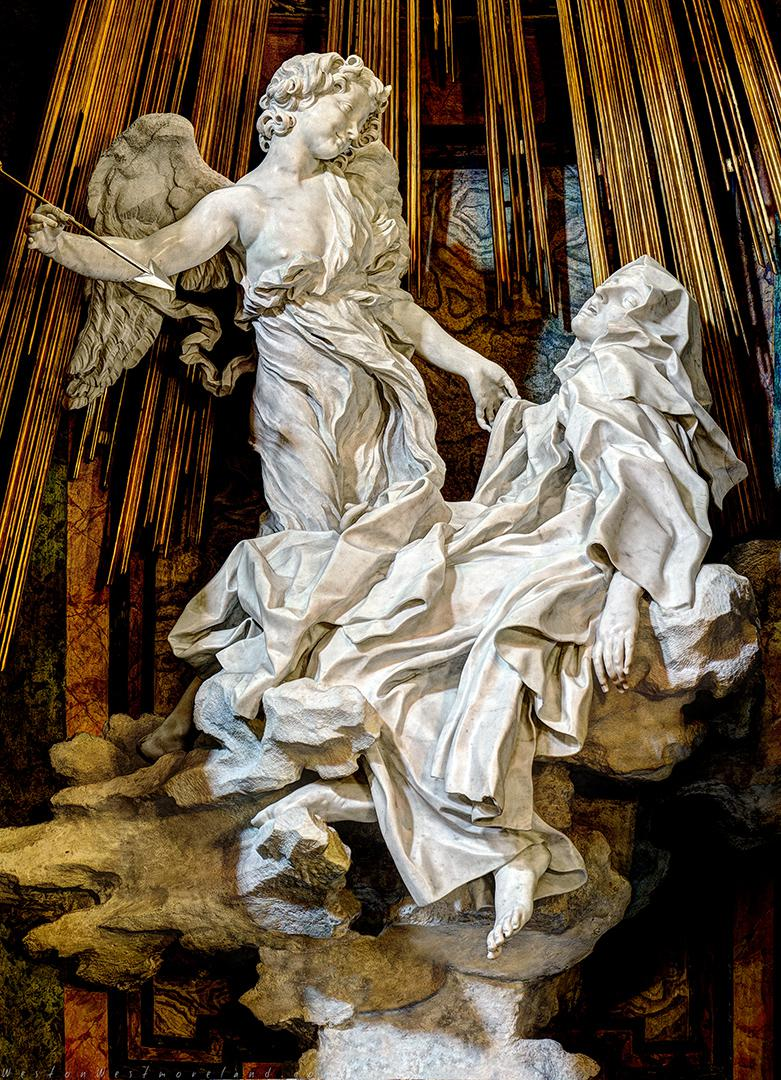
Bernini, The Ecstasy of St. Teresa, Santa Maria Della Vittoria, Rome, 1645-52
17th Italy Baroque
St. Teresa had a vision, and an angel pierced her w/a golden arrow, sending her in a state of ecstasy.
“The pain was so great, I wished it would last forever, sweet, endear embrace of God.” psychological pain,
Controversial statue, sensual, erotic, and sexual expression on St. Teresa.
Angel is depicted as mischievous, while is in ecstasy.
Very dramatic and theatrical
Gold rays pouring down on them, adds tenebrism
stained glass above the statue as well, real-life light and tenebrism
“celestial explosion”
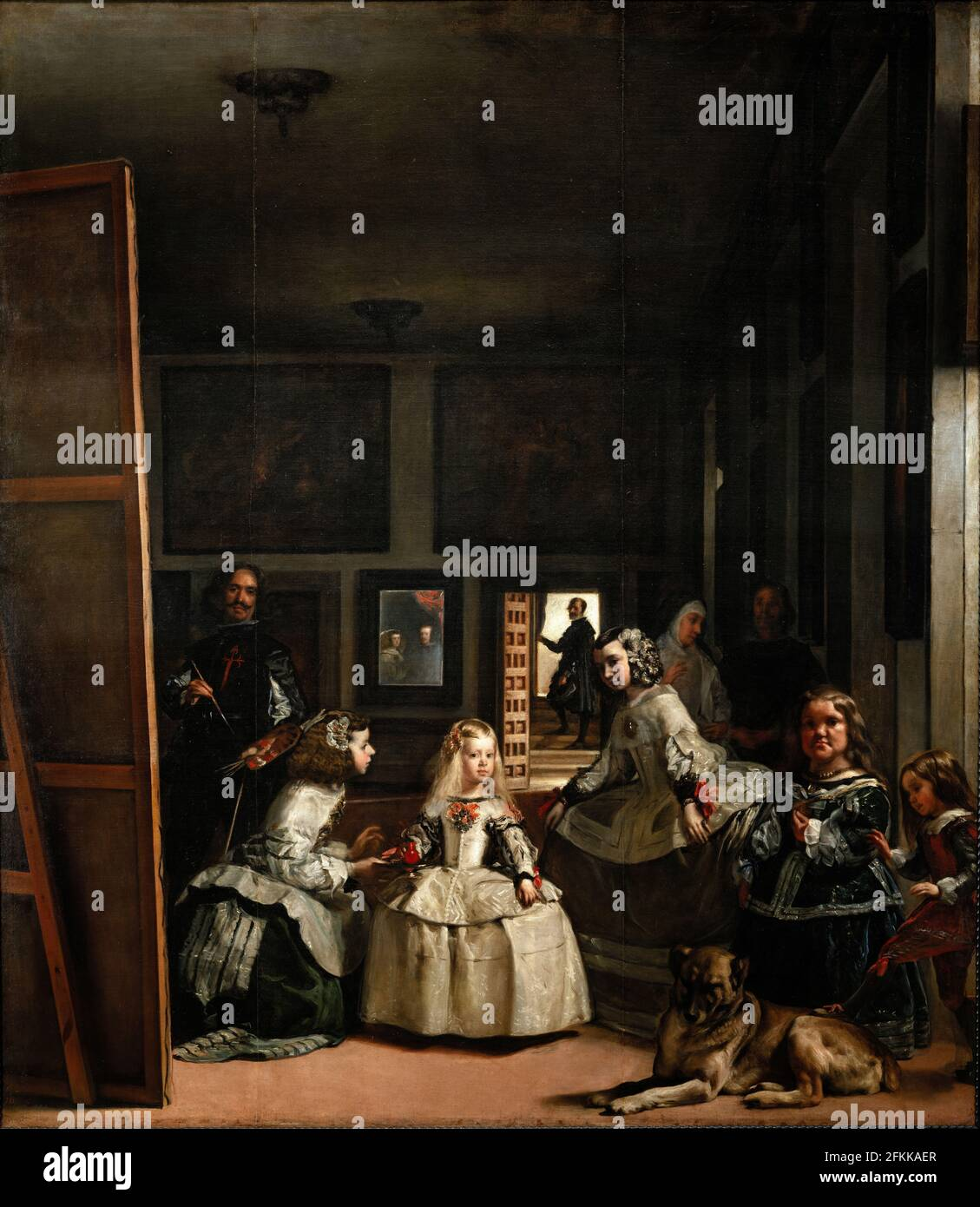
Velazquez, The Maids of Honor, 1656
17th century Spanish Baroque
Political, King & Queen are tiny
portrait painting, a whole bunch of characters, and a giant canvas on the left w/ Velazquexz in the act of painting the King and King, as well as us, the audience.
We the audience are put in the position of the King and Queen of Spain
Mirror in the center, reflecting the King and Queen, an ode to Van Eyck.
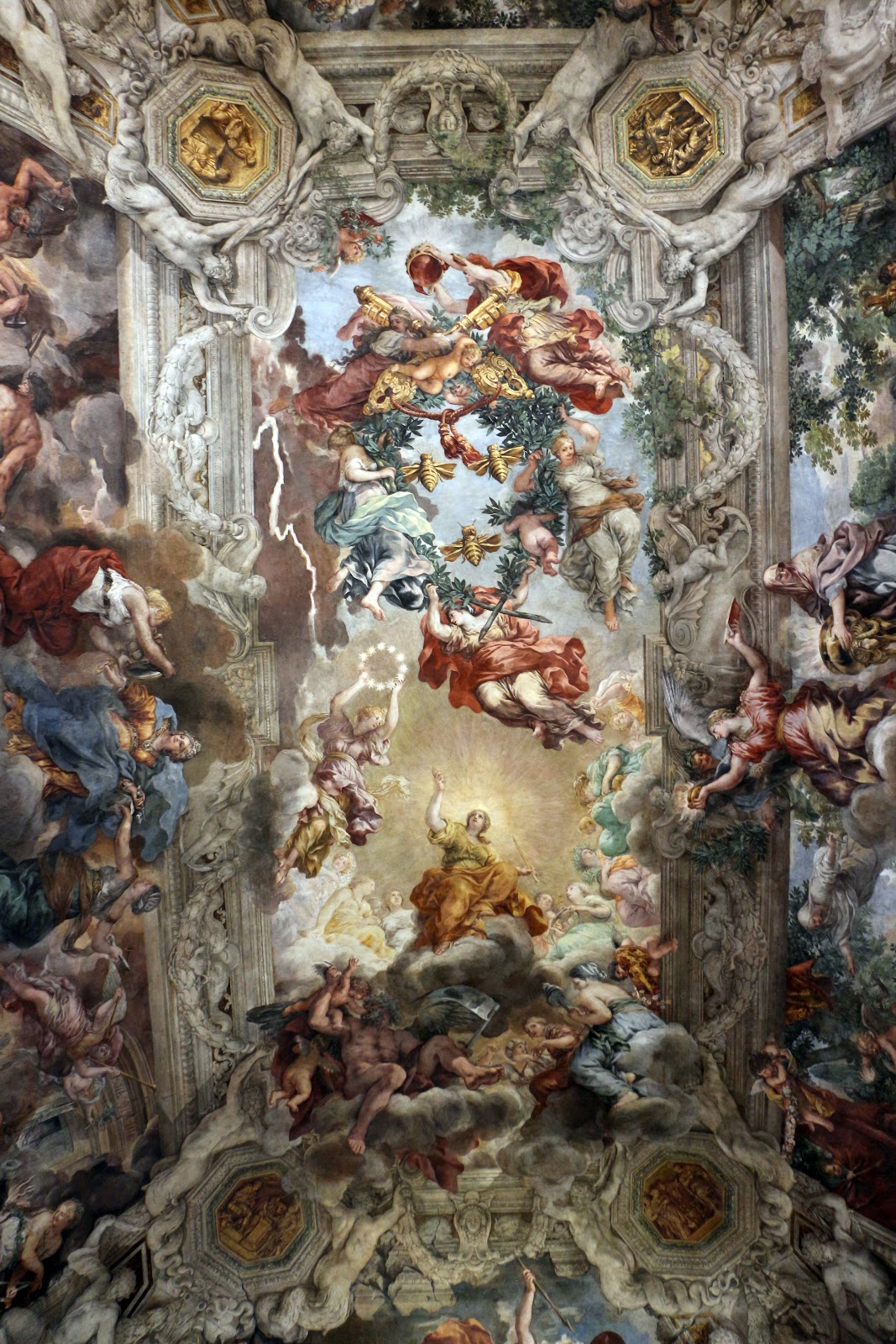
De Cortona, Allegory of Divine Providence, 1633-39
17th Century Italy Baroque
giving depth to the sky
figures spilling out towards the audience
story being shown was the belief that at this moment a new pope was being chosen and the divine heavens did a divine intervention to crown the pope.
Crest of Bees represents Pope Urban
over-the-top theatrical presentation, making it baroque.
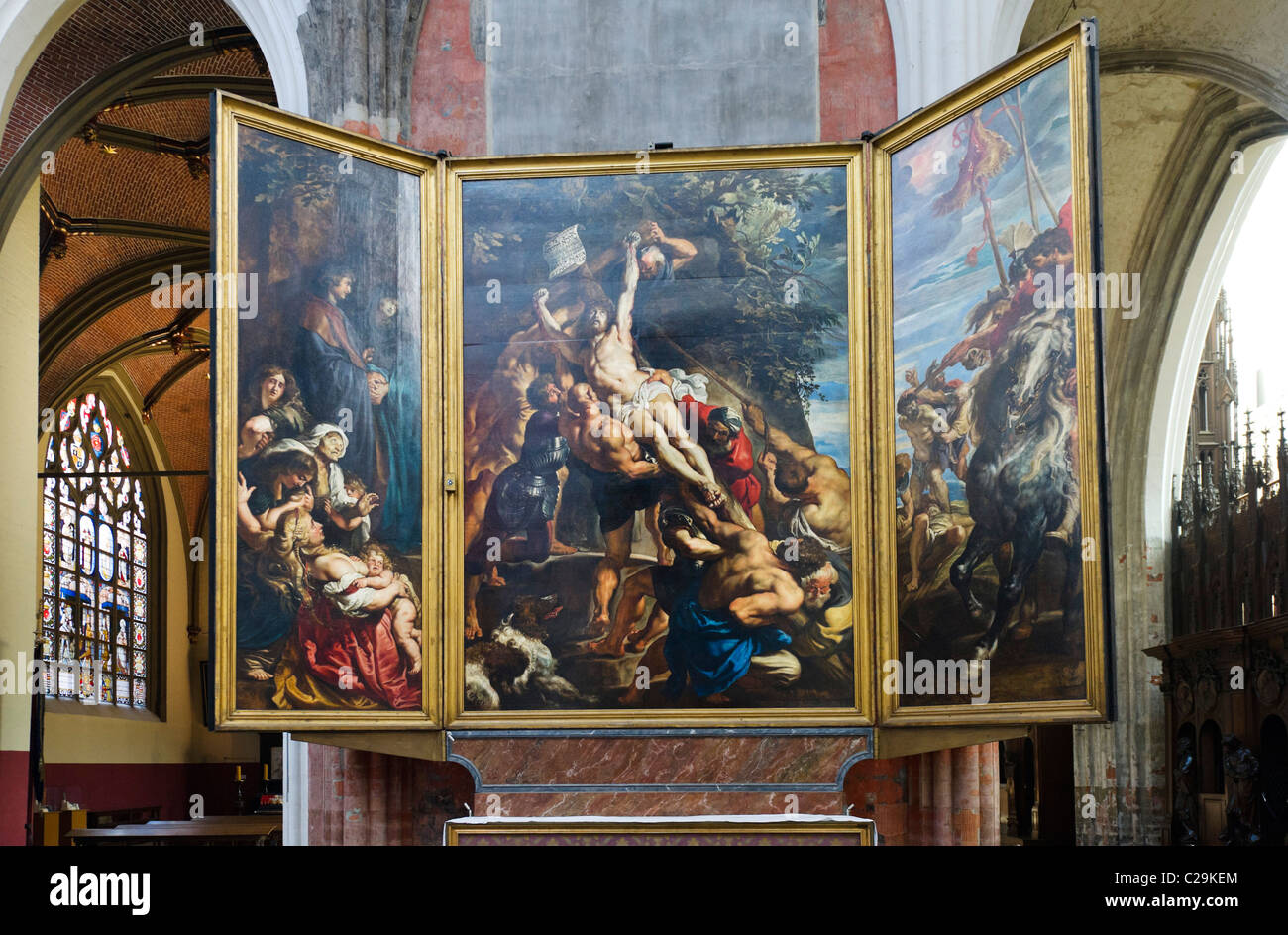
Rubens, The Raising of the Cross, 1610-11
Flemish, Northern Baroque
15 ft (H) x 20 ft (w)
Tritypch
elongated, huge body of Christ, diagonal, and cuts through the middle of the painting.
Mannerist bodies, contorted, twisted bodies
very muscular, even the horse and baby
Very detailed like the Northerner paintings
Tenebrism, Christ is the brightest figure.
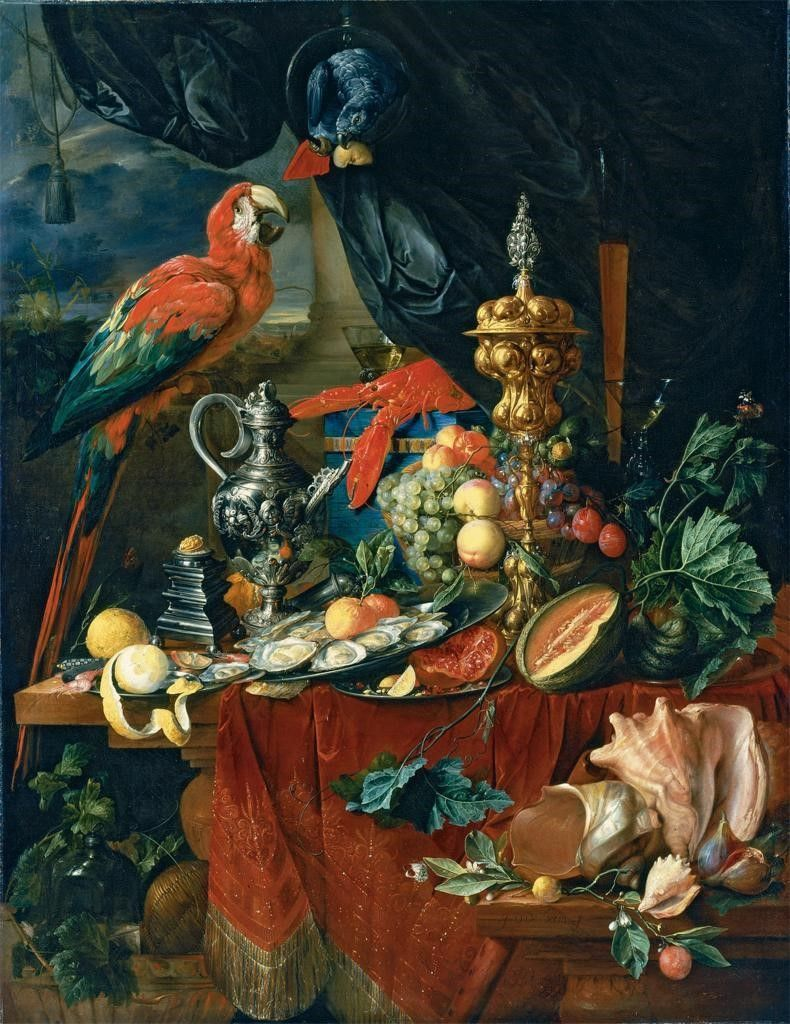
De Heem, Still Life With Exotic Birds
Flemish, Northern Baroque
Still life is popular again during this time
Wealth and exotic items being displayed
Popular to show off your wealth by obtaining exotic items, seashells, oysters, exotic birds (Parrots), lobster, and papaya.
High skill portrayed in the oysters, feathers of the parrot, the citrus, silver embellishment item.
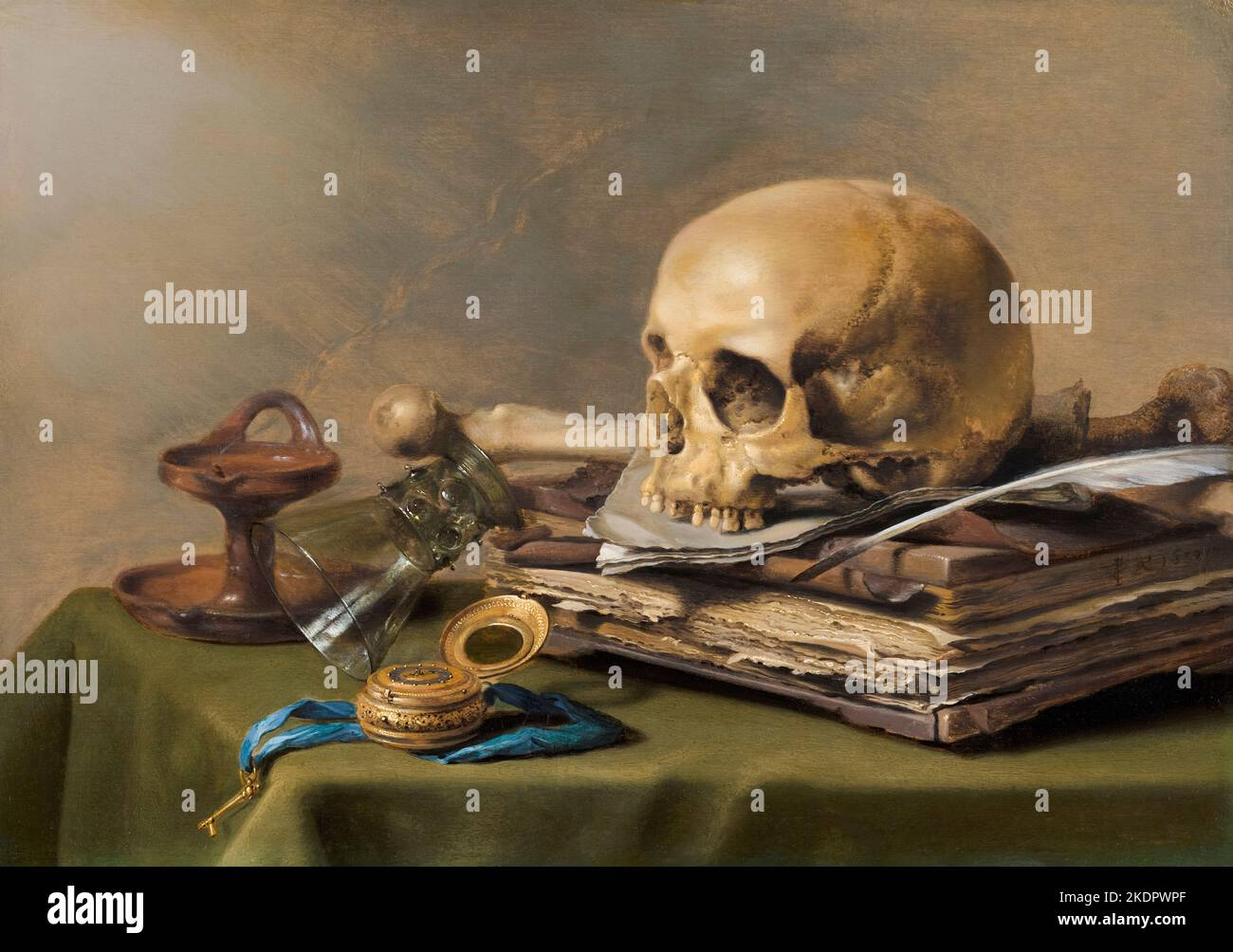
Claesz, Vanitas Still Life
Dutch, Northern Baroque
glass is turned over, as if it is going to fall off
walnut, not on a tree anymore, fleeting
skull, human life is fleeting
the music will stop at some point, not always playing
clock mechanism, time will stop for you at some point
Vanitas underlying in most still lives, fruit, birds, broken glass, all of these are fleeting
full rendering of the window being reflected in all the objects
Silverball reflection, no reason for the ball to be there other than to show off painting skills, conversation w? Van Eyck, Parmigianino with the convex mirror, and Velezquez, Claez in the reflection.
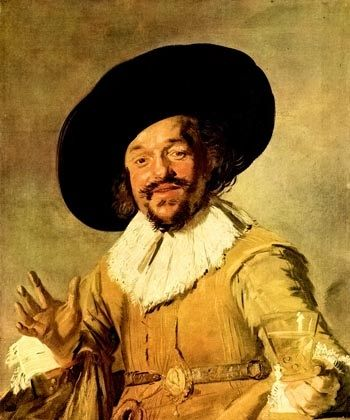
Hals, The Jolly Toper, 1628-30
Northern Baroque
Toper is a drinker, a drunk. A jolly drunk
Average middle-class man, not many paintings w/a middle-class man
controversial bc why would the wealthy want a painting of a drunk middle-class man
This is a man who drinks “beyond his thirst”
Not perfectly renders, not painted as crisply
Hals is more than capable of doing so, purposefully chooses not to.
Bottom part of the glass looks unfinished
Using a very limited color palette
Left hand also looks unfinished
Tilted hat, caught him during a gestural moment of him telling a story
The rendering of his face looks the most unfinished, rough look, vivid brush strokes, beard and mustache as well.
It makes sense to depict the drunk in this way, as he is not sophisticated at this moment.
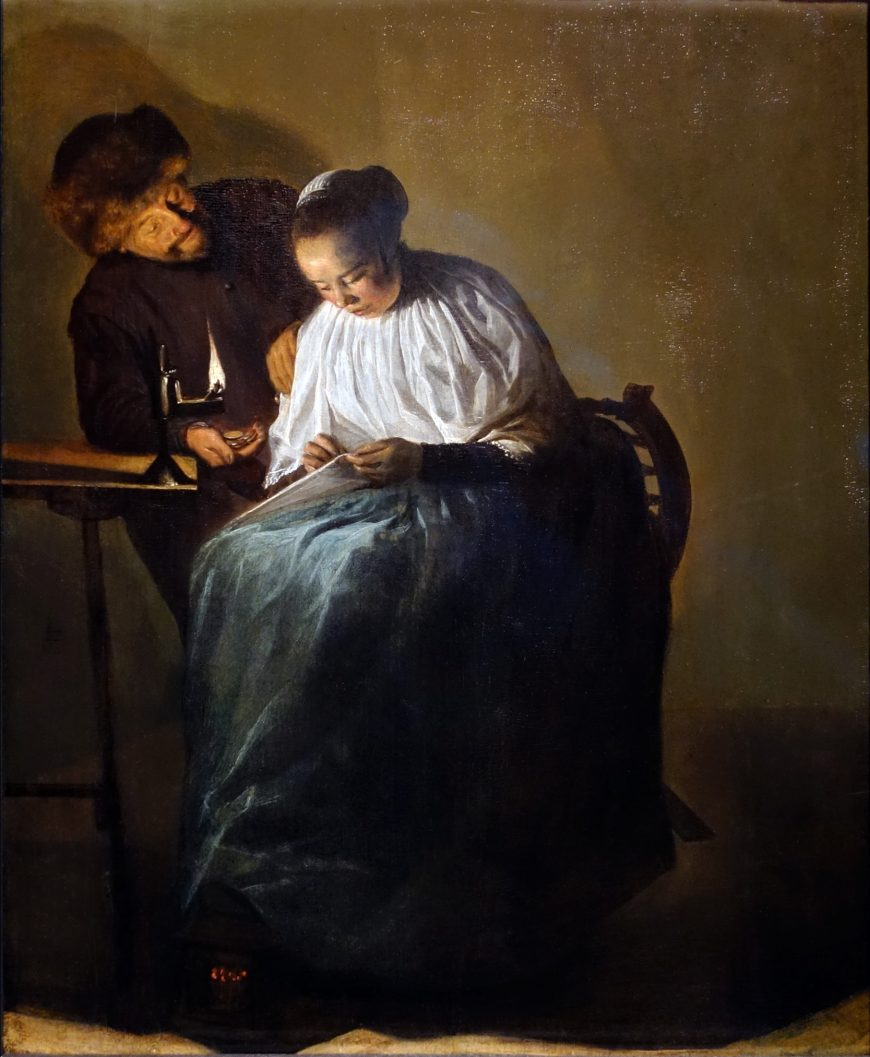
Leyster, The Proposition, 1631
Northern Baroque
Well-known and respected female painter within her lifetime.
teaches painting and has her own studio.
tenebrism, candle would not be able to illuminate that much, has to be an outside light source.
during this time proposition is very likely, prostitution.
Very large man leaning over her, a watch of coins in his left hand.
Right hand on her shoulder, more menacing than seen at first glance.
woman is doing her best to be unfazed and continuing to sew.
extension of Leyster’s own political commentary
unamused facial expression on the woman’s face.
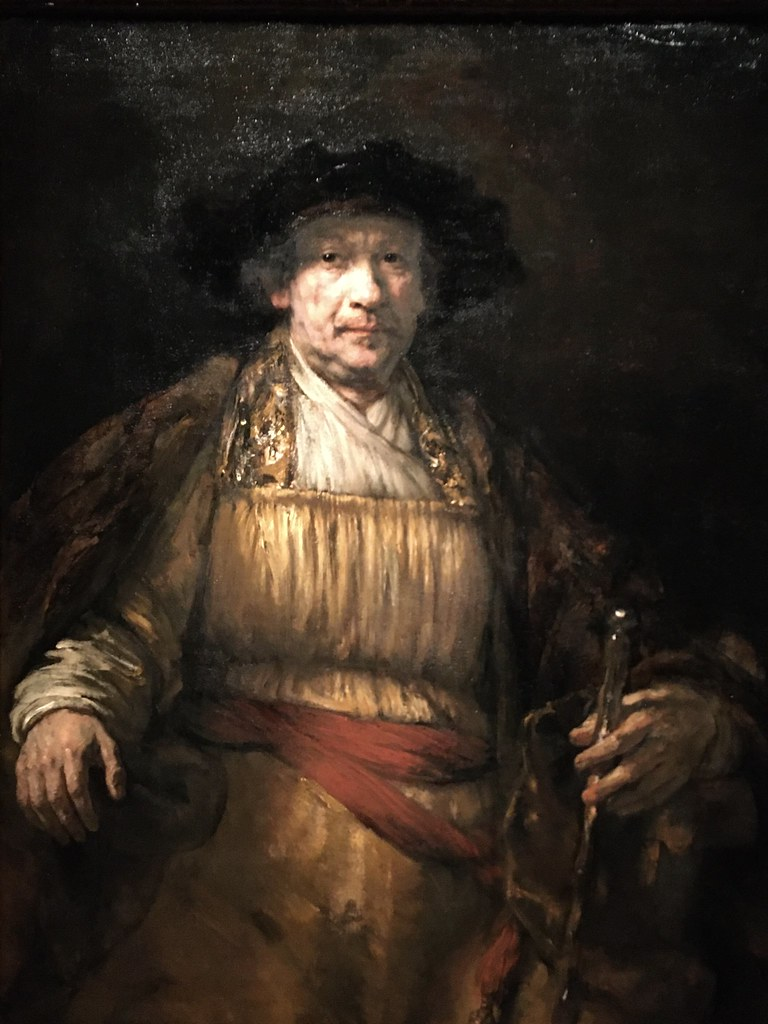
Rembrandt, Self-Portrait, 1658
Dutch, Northern Baroque
Emerging from the darkness, towards us, the audience
tenebrism
Brim of the hat casts a shadow on his face
darker-colored cloak on top of his bright clothing
portraits having a sense of dignity, more human-like and engaging
His trademark are very very dark paintings with figures that emerge from the darkness
extreme detail, the folds of his clothing, and the wrinkles on his face.
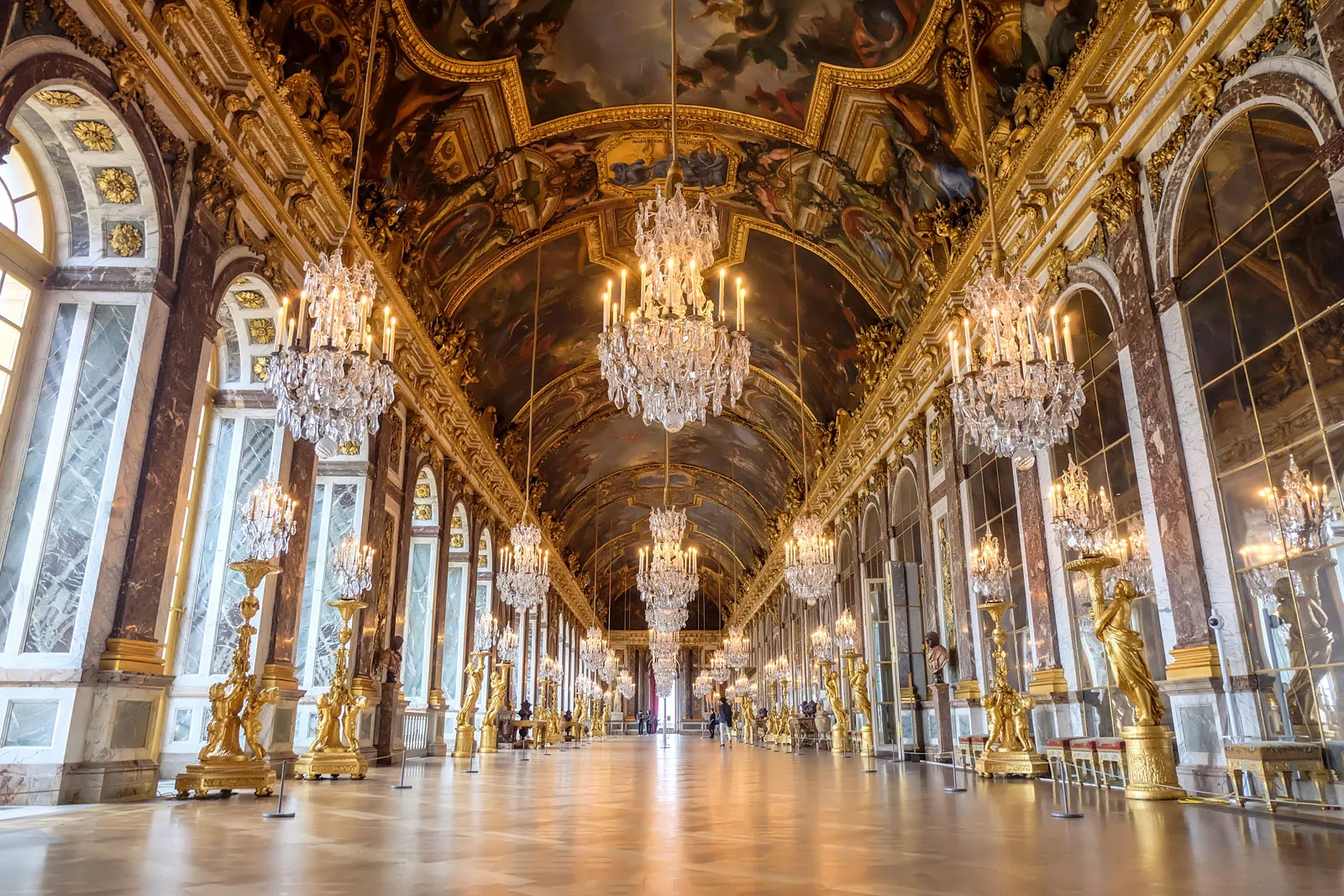
Le Brun, Hall of Mirrors, Versailles
French Baroque
the light from the windows will bounce around as it reflects
at night, candles would have illuminated the room
room was made to show off his power and appearance
mirrors were massive signs of wealth, 240 ft of mirrors
the very least estimate of the building of the Palace of Versailles is $2 billion.
Palace of Versailles is a mix of classical and decorative details.
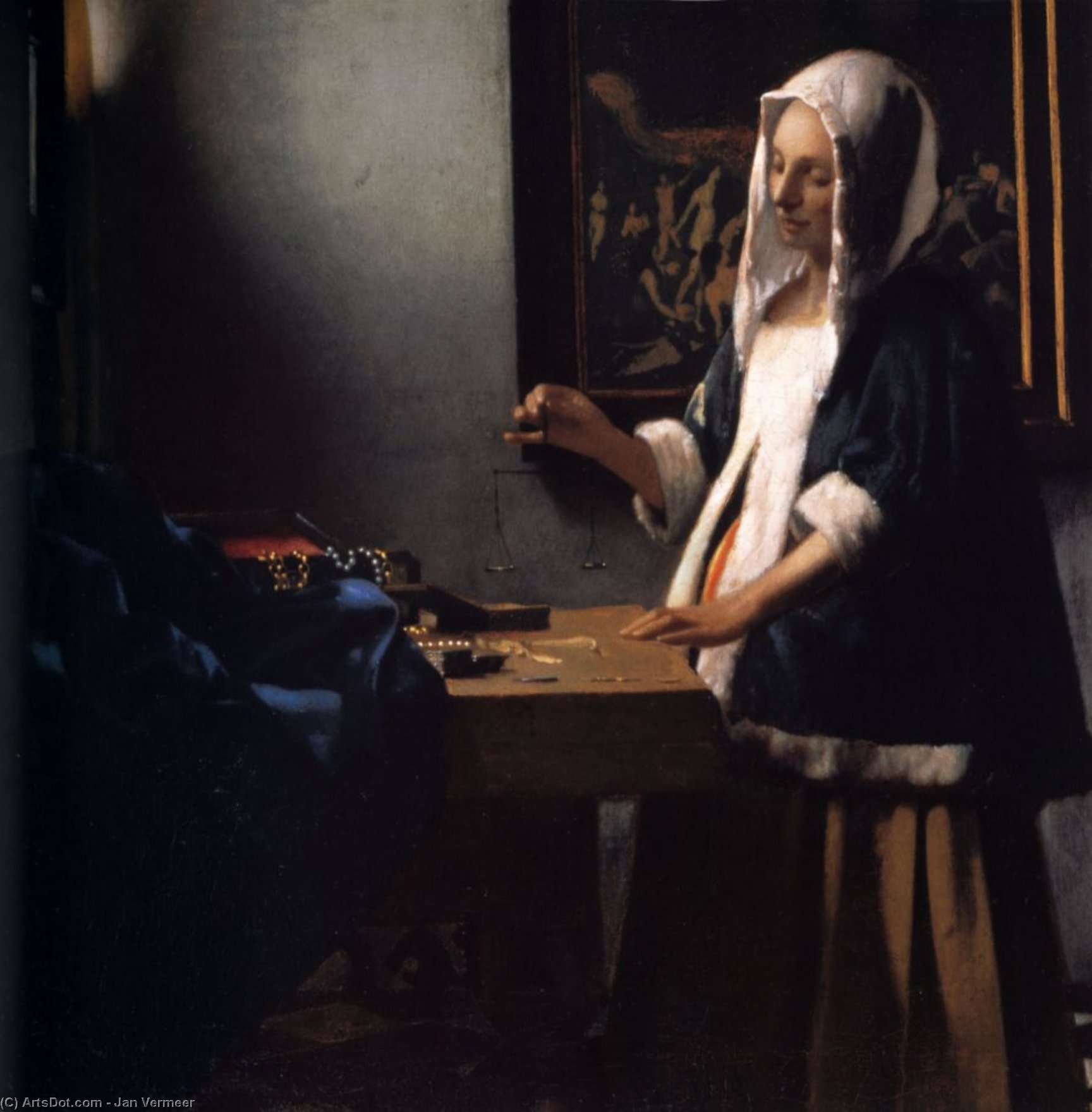
Vermeer, Woman Holding a Balance, 1664
Northern Baroque
tenebrism, more realistic portrayal of light
head-piece and trim of her garment are white and highlight her face
Last Judgement scene painting behind her
The painting frames her face.
She’s holding a set of scales, that match the weighing of the souls in the Last Judgement
Revealing a bit of a baby bump
believed that she is weighing the soul of her baby
Paintings are often as described as delicate w/ details
portrays intimate scenes where the figure has no idea there’s an audience peering into their lives.
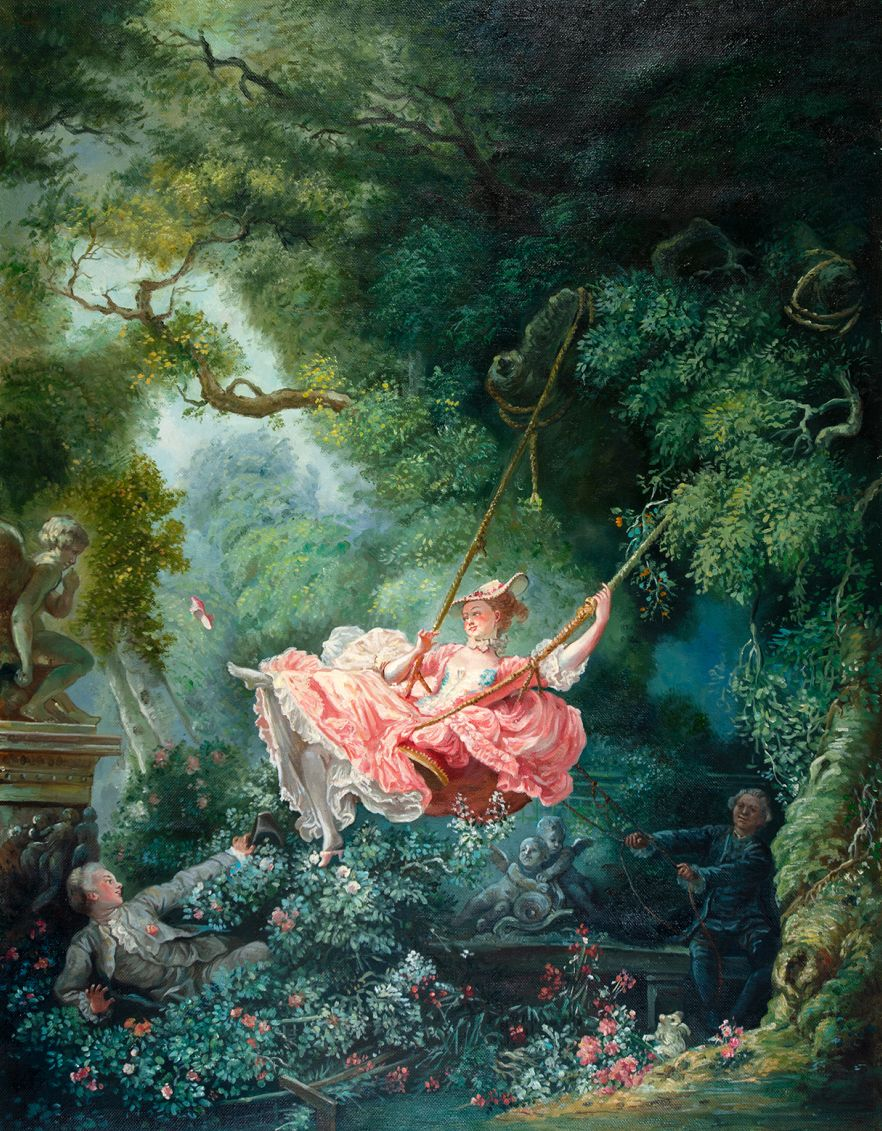
Fragonard, The Swing, 1767
Rococo
Fantastical, lots of details in the leaves, a hazy background
man in front of her is a potential suitor or lover, silly sticking off her shoe but actually showing off her undergarments.
statue of Cupid having a finger to his mouth, keeping a secret
slight eroticism
decorative
painting only for the wealthy, portraying times of fun, playful, pleasures of life, and indulgence of wealth.
The wealthy loved paintings like this
Quadri Riportati
Painted frames to appear as an easel painting
Quadratura
Painted architectural framework
Di sotto in su
From below to above, considering the viewer.
Caravaggisti
Follower of Caravaggio
Femme-Savant
An educated, cultured, and accomplished woman
Sprezzatura
Manners, for manners sake! Effortless sophistication.
Mannerism
An experimentation with proportions, ideal figures, and unusual compositions including:
elongated limbs
extreme detail and beauty (drapery! hair)
expressiveness (whole body and small gesture)
complex subject matter, eroticism
complex subject matter